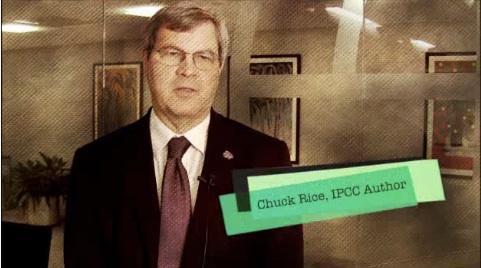
Scaling up low emissions practices
To limit global warming by 2°C above pre-industrial levels by 2100, agriculture – like other sectors – must reduce emissions. Since three-fourths of agricultural emissions originate from the developing world, low emissions practices must also benefit food security. To meet country-level and global reduced emissions goals, CCAFS aims to reach millions of farmers quickly by integrating low emissions practices into national agricultural development, sustainability initiatives and private sector investment.
Little experience and information is currently available about which private and public sector policies, financing, and incentives best support the long-term adoption of low emissions practices. Monitoring, reporting and verification needed to ensure that practices meet low emissions and livelihood goals is often unclear or unfeasible. And progress is slow when national governments and financial institutions report they are unable or wary to put resources into climate-smart agricultural practices when they have competing priorities and agendas. Barriers such as lack of credit and extension services, weak local institutions, unclear benefits to the farmer, and local power distributions—particularly between men and women—limit farmers’ abilities to innovate. Crucially, these barriers also make it harder for farmers to adopt new practices that help them adapt to and mitigate climate change.
Research shows that the largest potential decrease in emissions from agriculture is through reducing deforestation and conversion of peat lands. CCAFS supports initiatives in beef, palm oil, soy and other major commodities that incentivise forest and peat-land conservation. CCAFS works with industries, consumer groups, and governments, sharing knowledge about agricultural emissions, supply chain sustainability, and innovative public-private institutional arrangements.
CCAFS prioritises support for large-scale implementation of high-impact low emissions practices: reducing methane from paddy rice and livestock, nitrous oxide from cereal crops, increasing carbon sequestration in agricultural landscapes, and increasing supply chain efficiencies. Implementation mechanisms include finance incentives, public and private investment, and community-based innovations that also support social equity. CCAFS cultivates a rich network of partnerships among national ministries, local governments, supply chain actors, private sector investors, development practitioners, research institutions, development banks, and donors.
IPCC WORKING GROUP III AUTHOR CHUCK RICE DESCRIBES THREE MITIGATION OPPORTUNITIES IN AGRICULTURE IN THIS VIDEO CLIP.
First-mover countries will demonstrate the feasibility and benefits of low-emissions policies. Farmers will benefit in terms of producitvity. National governments will benefit from country-level Intended Nationally Determined Contributions (INDCs) to the United Nations Framework Convention on Climate Change or Nationally Appropriate Mitigation Actions (NAMAs) in agriculture that support sustainable development goals and global decreases in emissions.
For example, CCAFS is working with the World Agroforestry Centre (ICRAF), UNIQUE Forestry and Land Use and government partners in Kenya to strengthen frameworks and guidance for mitigation actions in the livestock sector. Counties, farmers and farmers' associations, and agribusiness are building capacities to implement and monitor transformational, low-emissions agriculture and increase productivity.
Projects Include:
Region | Project Name |
| Southeast Asia |
|
| Latin America | |
| East Africa | |
| South Asia |
|
| Global |
|
Further Reading:
- Blog and video presentation: Beefing up sustainable agriculture production in Brazil
- Working paper: Certifying sustainability: opportunities and challenges for the cattle supply chain in Brazil
- Blog: Carbon and communities: innovative approaches to agriculture and forest management in Indonesia
- Article: Enhancing the sustainability of commodity supply chains in tropical forest and agricultural landscapes
- Working paper: Interventions for achieving sustainability in tropical forest and agricultural landscapes
- Working paper: Corporate social responsibility and supply agreements in the private sector: Decreasing land and climate pressures
- Training manual: Sustainable agriculture land managment practices for climate change mitigation
- Policy brief: Paving the way for nationally appropriate mitigation actions in the agricultural sector
- Review paper: National integrated mitigation planning in agriculture
- Working paper: Financing sustainable agriculture and mitigation: The Landscape Fund
- Working Paper: Development of a participatory action research approach for four agricultural carbon projects in East Africa
- Policy Brief: How can small-scale farmers benefit from carbon markets?
- CCAFS Report: Towards climate change mitigation: Incentives and benefits for smallholder farmers



